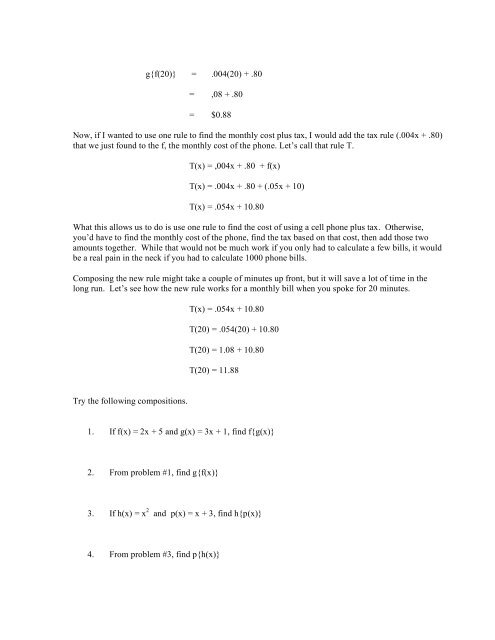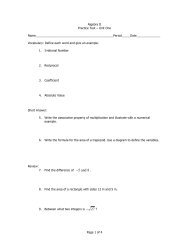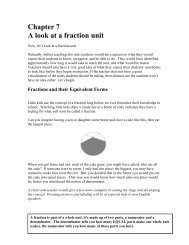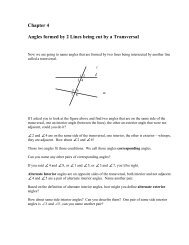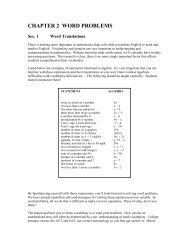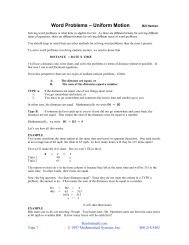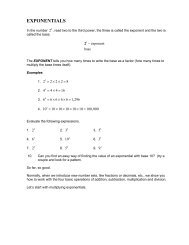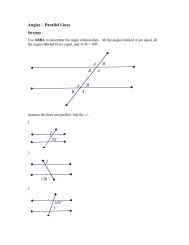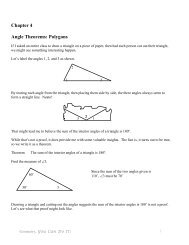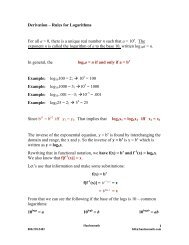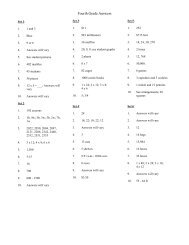Chapter 4 Relations and Functions - Hanlon Math
Chapter 4 Relations and Functions - Hanlon Math
Chapter 4 Relations and Functions - Hanlon Math
You also want an ePaper? Increase the reach of your titles
YUMPU automatically turns print PDFs into web optimized ePapers that Google loves.
g{f(20)} = .004(20) + .80<br />
= ,08 + .80<br />
= $0.88<br />
Now, if I wanted to use one rule to find the monthly cost plus tax, I would add the tax rule (.004x + .80)<br />
that we just found to the f, the monthly cost of the phone. Let’s call that rule T.<br />
T(x) = ,004x + .80 + f(x)<br />
T(x) = .004x + .80 + (.05x + 10)<br />
T(x) = .054x + 10.80<br />
What this allows us to do is use one rule to find the cost of using a cell phone plus tax. Otherwise,<br />
you’d have to find the monthly cost of the phone, find the tax based on that cost, then add those two<br />
amounts together. While that would not be much work if you only had to calculate a few bills, it would<br />
be a real pain in the neck if you had to calculate 1000 phone bills.<br />
Composing the new rule might take a couple of minutes up front, but it will save a lot of time in the<br />
long run. Let’s see how the new rule works for a monthly bill when you spoke for 20 minutes.<br />
T(x) = .054x + 10.80<br />
T(20) = .054(20) + 10.80<br />
T(20) = 1.08 + 10.80<br />
T(20) = 11.88<br />
Try the following compositions.<br />
1. If f(x) = 2x + 5 <strong>and</strong> g(x) = 3x + 1, find f{g(x)}<br />
2. From problem #1, find g{f(x)}<br />
3. If h(x) = x 2 <strong>and</strong> p(x) = x + 3, find h{p(x)}<br />
4. From problem #3, find p{h(x)}


